When ensuring the health, safety, well-being, and education of children and their families, educators must comply with regulatory and legislative requirements from the national and state/territory government bodies. It is also an expectation that services work within a best practice model, where they operate in line with relevant codes, conventions, and guidelines for the industry.
By the end of this topic, you will understand:
- The National Quality Framework and the National Quality Standard
- How to facilitate the assessment and rating process
- How to prepare for the assessment and rating visit.
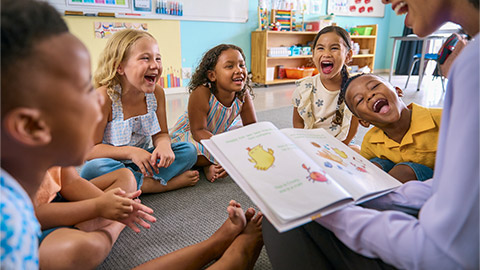
Services will ensure that they provide staff with information and training to support them in understanding and implementing the NQF, legislation and regulations.
In 2012, all Australian governments began collaborating to provide higher educational and developmental outcomes for children, introducing the National Quality Framework (NQF). The NQF should be instilled into long day care, family day care, preschools, kindergartens and outside-school-hours care (OSHC). Its objective is to drive continuous improvement in these settings as well as a consistent approach, utilising:
- National Law and Regulations
- The National Quality Standard
- An assessment and quality rating process
- National approved learning frameworks
- The regulatory authority in each state/territory responsible for the approval, monitoring and quality assessment of services in their state/territory
- The Australian Children’s Education and Care Quality Authority (ACECQA), which is a national body that guides the implementation of the NQF and works with regulatory authorities
QA1 Educational program and practice
QA2 Children's health and safety
QA3 Physical environment
QA4 Staffing arrangements
QA5 Relationships with children
QA6 Collaborative partnerships with families and communities
QA7 Governance and leadership
- Belonging, Being & Becoming
- The early years learning framework for Australia
- My Time, Our Place
- Framework for School Age Care in Australia
- Excellent (awarded by ACECQA)
- Exceeding National Quality Standard
- Meeting National Quality Standard
- Working Towards National Quality Standard
- Significant Improvement Required
The objectives of the NQF are to:
- ensure the safety, health and well-being of children attending education and care services and improve the educational and developmental outcomes for children attending education and care services
- promote continuous improvement in the provision of quality education and care services
- establish a system of national integration and shared responsibility between participating jurisdictions and the Commonwealth in the administration of the National Quality Framework
- improve public knowledge and access to information about the quality of education and care services
- reduce the regulatory and administrative burden for education and care services by enabling information to be shared between participating jurisdictions and the Commonwealth.
The ACECQA guides the implementation of the NQF and works with regulatory authorities. It provides resources, advice, consultation, and support for services implementing the NQF. ACECQA is the national authority. They work with the Australian and state and territory governments such as the Department of Education, Department of Health, Department of Social Services and Department of Human Services to:
- implement changes that benefit children birth to 13 years of age and their families
- monitor and promote the consistent application of the Education and Care Services National Law across all states and territories
- support the children’s education and care sector to improve quality outcomes for children
Reading
To find out more about national and state regulatory bodies, review these links:
State-based regulatory bodies provide approvals for services, monitor their progress and regulations, and manage the quality assessment process. Read more for a directory of the different state-based regulatory bodies in Australia: Contact Your Regulatory Authority from the ACECQA.
There is also a range of non-government services that can provide assistance and compliance support resources, including:
- Community Connections Solutions Australia
- Early Childhood Australia (ECA)
- Early Childhood Teachers Association
- Early Childhood Association Australia
- Australian Childcare Alliance
To find out more about the non-government bodies that can assist services with information and support, go to the ACECQA website.
The Education and Care Services National Law Regulations
The Education and Care Services National Law (National Law) and the Education and Care Services National Regulations (National Regulations) detail and apply the operational and legal requirements for an education and care service.
The National Regulations are a practical document detailing how to implement the National Law into a service. It leads and directs practice.
Watch the clip to learn more about ACECQA and regulatory authorities:
Regulatory Authority
The governing body responsible for regulating Early Childhood Education and Care Services in Australia varies by state and territory. Here is a list of the governing bodies responsible for regulating Early Childhood Education and Care Services across all Australian states and territories, along with a description of their roles:
|
1. New South Wales (NSW)
|
|
2. Victoria (VIC)
|
|
3. Queensland (QLD)
|
|
4. Western Australia (WA)
|
|
5. South Australia (SA)
|
|
6. Tasmania (TAS)
|
|
8. Northern Territory (NT)
|
Common Roles of Governing Bodies
Across all states and territories, the governing bodies share common roles
- Service Approval: Approving new services and ensuring they meet the required standards.
- Compliance Monitoring: Ensuring services comply with the National Law, Regulations, and the NQS through regular assessments, inspections, and ratings.
- Enforcement: Taking action where services do not meet standards, including penalties or suspending operations when necessary.
- Support and Guidance: Providing professional development, resources, and advice to help services improve quality.
- Continuous Improvement: Promoting a culture of continuous improvement by guiding services through their Quality Improvement Plans (QIP).
Each governing body works closely with the Australian Children’s Education and Care Quality Authority (ACECQA) to ensure consistent application of the National Quality Framework (NQF) across Australia.
Practice
Navigating the National Regulations
Review the National Regulations: Education and Care Services National Regulations (2011 SI 653) from New South Wales Legislation.
For each of the listed areas, describe what they would require in practice and the consequences for not meeting the requirements:
- E81 Sleep and rest
- E89 First aid kits
- E99 Children leaving the education and care service premises
- E118 Educational leader
Ensure that you keep notes for future reference, as this information will support your assessment and professional practice.
The National Quality Standard

The National Quality Standard (NQS) is a framework used in Australia to ensure the delivery of high-quality education and care in early childhood services. It is part of the National Quality Framework (NQF), which aims to improve children's safety, health, and education in Early Childhood Services.
The NQS is divided into seven Quality Areas, each addressing a critical aspect of early childhood education and care:
Watch the video to learn about the National Quality Standard:
The NQS sets out to provide children with a safe, engaging, and enriching environment that supports their development and learning by focusing on seven distinct Quality Areas.
Here’s an overview of each Quality Area, including the essential aspects they cover and practical examples of how services can demonstrate their commitment to these standards:
| NQS Quality Area | Quality Area Focus | How they are demonstrated at the service |
| Quality Area 1 - Educational Program and Practice | This area focuses on the development and implementation of educational programs that support children’s learning and development. | Individualised Learning Plans: Educators develop individualised learning plans based on each child's interests, needs, and developmental stage, ensuring that activities are tailored to support their growth. Learning Outcomes Assessment: The service regularly assesses and documents children's progress towards the learning outcomes outlined in the Early Years Learning Framework (EYLF) or similar frameworks. Interactive Learning Environments: Classrooms are arranged to provide a variety of learning experiences, such as sensory play areas, creative art stations, and literacy corners, to engage children in hands-on learning. |
| Quality Area 2 - Children's Health and Safety | This area emphasises maintaining a safe and healthy environment for children. |
Health and Hygiene Practices: Regular handwashing routines are established, and the service follows strict procedures for cleaning and sanitising toys and equipment to prevent the spread of illness. |
| Quality Area 3 - Physical Environment | This area focuses on the quality and safety of the physical environment in which children learn and play. |
Safe and Engaging Spaces: The indoor and outdoor play areas are designed to be safe, accessible, and engaging, with age-appropriate equipment and materials that encourage exploration and physical activity. |
| Quality Area 4 - Staffing Arrangements | This area covers the staffing levels and qualifications necessary to provide high-quality education and care. |
Qualified Staff: All educators hold relevant qualifications and have undergone background checks to ensure they meet the required standards for early childhood education. |
| Quality Area 5 - Relationships with children | This area focuses on the quality of interactions and relationships between educators and children. |
Positive Interactions: Educators engage with children in a respectful and supportive manner, using positive reinforcement and encouragement to build their confidence and self-esteem. |
| Quality Area 6 - Collaborative Partnerships with Families and Communities | This area emphasises building strong partnerships with families and communities to support children's learning and development. |
Regular Communication: The service maintains open and regular communication with families through newsletters, meetings, and daily updates to keep them informed about their child’s progress and service activities. |
| Quality Area 7 - Governance and Leadership | This area focuses on the governance and leadership structures that support the effective operation of the service. |
Clear Policies and Procedures: The service has well-documented policies and procedures in place, including those for child protection, staff management, and emergency responses, which are regularly reviewed and updated. |
Practice
Navigate the NQS
Read through the NQS handout.
Download and complete the detail in the template table: Navigate the NQS
This table describes the nationally approved learning frameworks:
| Approved Learning Framework | Description | |
|---|---|---|
| Belonging, Being & Becoming: The Early Years Learning Framework for Australia (EYLF) |
The EYLF is Australia’s first national early years learning framework for early childhood educators, assisting them in providing young children with opportunities to maximise their potential and develop a foundation for future success in learning. The framework was made to extend and enrich children’s learning from birth to five years and through the transition to school. |
|
| My Time, Our Place: Framework for School Age Care in Australia (MTOP) |
This framework is linked to the EYLF, Australia’s first nationally used framework for school-age care. It has been designed for use by school-age care educators working in partnership with children, their families, and the community, including schools. It aims to extend and enrich children’s well-being and development in school-age care settings. |
|
| Specific state frameworks | ||
| Victorian Early Years Learning and Development Framework: For All Children from Birth to Eight Years (VEYLDF) |
The VEYLDF guides early childhood professionals in collaborating with families to support their children. The framework embraces and responds to the cultural and linguistic diversity of the Victorian community and their diverse approaches to child-rearing. The framework has been made to guide early childhood professionals toward achieving the nationally agreed EYLF Learning Outcomes with the amalgamation of the Victorian Curriculum F–10 (the first three levels). |
|
 |
Western Australia: Curriculum Framework for Kindergarten to Year 10 | The Western Australian (WA) curriculum framework covers kindergarten to year 10, with prescribed content and standards for program planning, learning, assessment, and communication reports to families. The framework encompasses English, mathematics, science, humanities, social science, physical education, the arts, language, and technology studies, all contextualised to meet the needs of the WA communities. |
Resource
You can find the full versions of the approved learning frameworks at Approved Learning Frameworks from the ACECQA.
Belonging, Being and Becoming
In this diagram from Belonging, Being and Becoming, you can see that the framework places children’s learning at its core and comprises three interrelated elements: principles, practice and learning outcomes. These elements are fundamental to early childhood pedagogy and curriculum decision-making.
Watch
View this clip to learn about Aboriginal and Torres Strait Islander people’s perspectives on the use of Belonging, Being & Becoming: ‘Belonging, Being and Becoming by Queensland Department of Education on YouTube: 6.34 minutes
Watch Part 1 of Environments for Belonging, Being and Becoming from the series Talking About Practice by ECA Learning Hub on YouTube. Part 1 - Watch Video
If you would like to watch the rest of Environments for Belonging, Being and Becoming, visit these links:
Resource
You can read the EYLF in full at Belonging, Being & Becoming: The Early Years Learning Framework for Australia.
Think
Reflect on and make notes about your sense of belonging, being and becoming in the current moment. For example, do you feel you ‘belong’ to a place/group or the world? Why? What do you think about your sense of ‘being’ in this current moment? How do you practice being in the moment? What are you curious about?
How are you working towards ‘becoming’? Do you have goals to improve your work-life balance or reach career aspirations? How do you picture yourself in the future?
Learning Outcomes

The EYLF describes a learning outcome as ‘a skill, knowledge, or disposition educators can actively promote in early childhood settings, in collaboration with children and families’.
The framework provides a broad direction for educators to facilitate learning for children and guides educators in their program decision-making, implementation, and evaluation.
The Framework conveys the highest expectations for all children’s learning from birth to five years and through the transitions to school. It communicates these expectations through the five Learning Outcomes:
- Children have a strong sense of identity
- Children are connected with and contribute to their world
- Children have a strong sense of wellbeing
- Children are confident and involved learners
- Children are effective communicators. EYLF6
Pedagogy
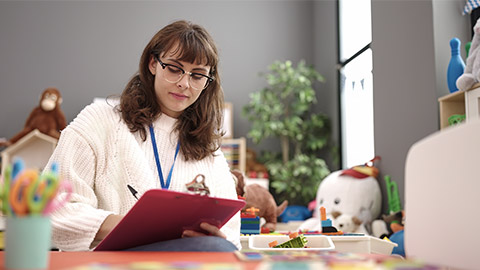
Often referred to as ‘the art of teaching’, ‘pedagogy’ is a term that encompasses the holistic nature of early childhood educators’ professional practice, relationship building, curriculum decision-making and use of relevant developmental and teaching/learning knowledge, experience, theories, and research.
When educators establish respectful and caring relationships with children and families, they are able to work together to construct curriculum and learning experiences relevant to children in their local context. These experiences gradually expand children’s knowledge and understanding of the world.
EYLF7
Your pedagogies will be your strategies or methods when implementing the curriculum and how you make decisions. They might include:
- The importance of allowing time for extended play experiences
- Critical reflection techniques
- Beliefs on the importance of meeting health, safety and comfort needs before learning can occur
- The understanding of each child in the context of their social and cultural world
- The development of genuine, trusting relationships with both the children and their families.
Resources
To learn more about pedagogy for the EYLF, visit What Is Pedagogy? How Does It Influence Our Practice?
Perspectives on Pedagogy from the Government of South Australia Department of Education and Child Development.
The principles underpin practice that is focused on assisting all children to make progress in relation to the Learning Outcomes.EYLF8
Principles and Practices
The principles, practice statements and learning outcomes do not work in isolation. They are interconnected and based on research and are a part of the holistic practice of the EYLF.
The EYLF and MTOP share the same five principles:
The principles of early childhood pedagogy underpin practice and promote learning. The pedagogical practices featured in the frameworks are based on the following:
Watch
Watch these videos on practice principles by the Department of Education and Training, Victoria, on YouTube:
The Practice Principles 1 of 2:
The Practice Principles 2 of 2:
VEYLDF Practice Principles – Reflective Practice:
VEYLDF Practice Principles – High Expectations for Every Child:
Practice
Learning outcomes, pedagogy, and practices
Read this scenario and list one (1) possible learning outcome for Linh:
Linh
Linh is four years old and has just returned to the service after the summer holidays. After scanning the room, she walks directly to the sand trough, puts shells all along the side, and gathers three small world people from the shelf beside it. She bounces the people up and down the sand, giggling and laughing. Then, she turns to the educator and says, ‘Can I add water? On my holiday at the beach, there was water. See, this is my dad, my mum and me, and we are playing at the beach, having so much fun!’
Download and complete the Learning Outcomes and Pedagogy worksheet
Every service will also have documented standards, policies, and procedures that link to each one of the standards in the National Quality Framework:
- Collaborative partnerships with families and communities
- Educational programs and practices
- Health and safety
- The physical environment
- Relationships with children
- Governance and leadership.
Contemporary Principles and Emerging Trends
The early childhood industry has continued to develop and evolve, especially with patterns of usage changing with more children entering early childhood services as both parents are working. In addition, since the introduction in 2012 of the NQF. There has been an increased focus on improving outcomes for children using services.

Some current trends in children’s services include:
- Use of technology in learning, including technology in the classroom and remote learning options using technology to allow accessibility (following the COVID pandemic in 2020 and the need for service shutdowns and home-schooling)
- An emergent curriculum where learning takes into consideration the needs and interests of children and forms learning that is based on their strengths and interests
- Using natural environments and outdoors to enhance learning
- Professionalising the early childhood workforce and obtaining professional recognition of workers
- Recognising the overall importance of the early years as a key learning environment for children.
Data is also maintained on the changing patterns of service providers and service types overall and by state/territory, as well as measuring rating outcomes and whether they are improving.
Some statistics from the most recent service snapshot by ACECQA9 include:
- Changes in the number of services in Australia, e.g., Victoria experienced a 13% increase in family day-care and a 6% increase in centre-based care
- Quality ratings, e.g., 27% of total services, exceed NQS quality ratings in the second quarter of 2022.
- Quality ratings, e.g., over 30% of services exceeding the NQS quality ratings, did so in all seven areas.
- Percentage of services in Australia per type, e.g., NSW has approximately 5800 services and is the state with the highest number, while the Northern Territory has only 225 total providers.
- The number of services by type, e.g., private for-profit providers, covers 21% of all providers while schools (combined) have 8% of services.
Educators can use problem-solving skills to identify deficiencies in information and address these by conducting ongoing searches. When researching information, educators will seek authoritative guidance to ensure the quality, credibility, and reliability of sources.
A checklist that can be used to confirm credibility would include the following evaluation criteria:
- authenticity
- balanced nature of the information presented, e.g., not a stereotyped or generalised, positive portrayal
- accuracy and support, e.g., up to date and correct.
Educators can meet deficits in information to build their development and knowledge by collaborating with the regulatory authority, non-government sources and peak agencies.
Resource
To use research to find out more about changes in the childcare sector by referring to ACECQA, State of the Sector report, which provides a snapshot of services and changes in annual periods.
To find out more about proposed strategies for children’s services, refer to the National Children’s Education and Care Workforce Strategy, Shaping Our Future, a ten-year strategy to ensure a sustainable, high-quality children’s education and care workforce 2022-2031.
Using Critical Reflection
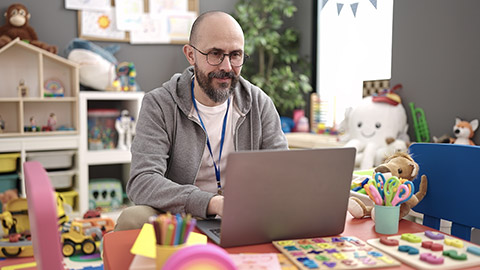
Reflection involves thoughtful and analytical thinking focused on improving the educator’s practice. It provides a platform for educators to think openly and analytically about key topics or questions that are the focus of the reflection. The insight educators and other staff gain during critical reflection can improve the quality of the service's practice. Reflection enables open discussion of success and identification of areas for improvement.
Critical reflection assists educators in identifying areas of development and provides an opportunity to build their knowledge and skills. It should be conducted regularly to explore the educators’ thoughts, feelings, and experiences. It is valuable for extending and refining professional practice and informing future development.
Educators use critical reflection to identify the need to acquire new knowledge and make positive changes to practice. Educators review beliefs and practices using questioning and assessment to make decisions that will enhance future practices.
Meaningful reflection occurs when quality information is gathered in response to key questions about what has occurred and why.
Meaningful reflection includes:
- thoughtfully exploring different aspects of a topic, including:
- the reasons that decisions were made
- whether and how the service's philosophy is reflected in the decision or practice
- what were the outcomes of the decision or practice?
- thoughtfully considering a range of perspectives on a topic, including the way that practices impact children and families

The Assessment and Rating of Services
Services are assessed and rated by their regulatory authority against the NQS.
The service will be assessed and rated in each of the seven quality areas and receive an overall service rating. These ratings must always be displayed at the service per national regulation 173. Services still waiting to be assessed are given a rating of ‘Provisional—Not yet assessed under the National Quality Framework’, which must also be displayed at the service.
Services can be rated as:
- Significant improvement required
- Working towards National Quality Standard
- Meeting National Quality Standard
- Exceeding National Quality Standard
- Excellent
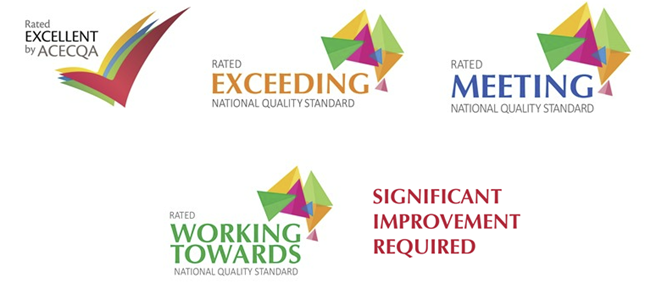
Images sourced from Starting Blocks
Services will ensure that they share information with all staff so they know their requirements under the assessment and rating process. This can include staff development opportunities and meetings discussing the assessment and rating process. Services will also involve staff to build their knowledge and understanding.
Self-assessment and quality improvement
Resources
To find out more about the assessments and rating system, visit the Starting Blocks
Service ratings are published to ensure transparency for the public. You can search for specific services to see their rating at these links:
The ACECQA10 website summarises the steps in the rating and assessment process. The process sets out the steps an approved provider will take to self-assess the quality of their current practices against the National Quality Standard and regulatory requirements.
|
The approved provider identifies strengths and areas for improvement on an ongoing basis. Notice of the start of the process (week 1) The regulatory authority provides written notice to an approved provider that the assessment and rating process has commenced. Quality improvement plan (week 3–4) The quality improvement plan is submitted to the regulatory authority before the visit, along with any additional information requested by the regulatory authority. Visit (week 5 to 8) The regulatory authority visits the service. Feedback on draft report (3–5 weeks after the visit) The regulatory authority provides the approved provider with a draft assessment and rating report. The provider can give feedback on any factual inaccuracies in the report and evidence to support feedback. Final report and notice of final ratings issued to the provider Feedback is considered before the final report is finalised and issued. The approved provider may apply for a review of final ratings within the set review period. Ratings published Once the review period has ended, the final ratings are published on the national registers.10 |
Resources
Read about the service assessment process at Assessment and Rating Process from ACECQA.
Self-Assessment
The self-assessment process is an important part of the quality improvement process. It is addressed by NQS Element 7.2.1, which states that a service must have ‘an effective self-assessment and quality improvement process in place’.
The self-assessment process requires a service to reflect on and assess their strengths and weaknesses against the National Quality Standard. Accordingly, the ACECQA devised a self-assessment tool to support services by evaluating whether their policies, procedures and practices align with the NQS, National Law and National Regulations. The ACECQA also produced the following diagram to demonstrate the self-assessment process:
1. Service Philosophy
Start by reflecting on your service philosophy.
Does it reflect your service's current operation? Is everyone familiar with the philosophy and its purpose?
2. Self- Assess
Self-assess 'what you do' against
- National Law and National Regulations
- All NQS quality areas
Immediately rectify any non-compliance
3. Identity Strengths & Areas for Improvement
Analyse the self-assessment to identity:
- Strengths - what you are doing well
- Areas for improvement
4. QIP
Use the outcomes of the self-assessment to inform the development or update of your QIP.
5. Service Philosophy
Review and reflect on your self-assessment processes
The self-assessment tool is an optional (non-compulsory) resource for services that can help support and inform their quality improvement plan. It lists several reflective questions to be posed regarding each NQS standard:
What practices do we implement that demonstrate this standard?
- How are our practices improving outcomes for children and families?
- How do we demonstrate that our practice is typical for our service?
- How do/could we articulate what informs our practice?
- How do we engage with families and/or the community?
- What, if any, are the areas where we need to take immediate action?
- What are the opportunities for quality improvement? ACECQA Self-Assessment Tool11
Services need to build rapport with children, families, and the community to interact and engage with them. Rapport is fostered through genuine and trust-based relationships. These aid in relationship building. To build rapport, educators will explore children, family and community members’ preferences and interests and find common interests to establish common ground. Establishing trusting relationships is the basis for building future positive interactions and communication.
Sharing information with children, families, and the community enables the service to engage them in the self-assessment process. They can be invited to contribute, provide feedback, and be involved in the process. These practices further build collaborative partnerships with stakeholders.
Staff can also be involved in the self-assessment process. This can occur at team meetings, staff development, review of policies and practices and conducting surveys. Services can share ideas with staff during self-assessment.
Services can make self-assessment data available to stakeholders to facilitate informed discussions on the process and ratings.
Resources
You can download the ACECQA self-assessment tool
Watch
Watch these videos to learn more about self-assessment and improving practices: Continuous Improvement in Practice by ACECQA on YouTube:;
Self-Assessment, Reflective Practice and Quality Improvement Processes by ECA Learning Hub on YouTube:
Practice
The self-assessment tool has many tips and ideas for action and critical reflection.
Review section 5 (‘Who self-assesses?’, pages 11–13) and reflect on the following questions:
- How would you personally encourage or engage in this feedback and process?
- How could you collect and document the necessary information?
- How could you create an ongoing cycle for assessment?
The Quality Improvement Plan (QIP)
The QIP is the primary document utilised during the rating and assessment process. It is an ongoing cycle demonstrating how a service strives further towards excellence. The QIP should use the information from the self-assessment as support and guidance to inform the plan.
Services will ensure that they consult with stakeholders and collaborate widely to identify strengths and key improvement areas through self-assessment and developing the QIP. The collaboration involves children, families, educators, staff members, management, and other interested parties. It can also involve representatives of community agencies and community members engaged with the service. This information will be recorded in the QIP.
Involving stakeholders in the quality improvement process is crucial for creating a collaborative, responsive, and inclusive environment within early childhood education and care services. Stakeholders—such as children, families, educators, and community members—each bring unique perspectives and insights that can help shape the service’s programs, policies, and practices. Engaging these groups in meaningful ways ensures that the service meets the needs and expectations of those it serves and fosters a sense of shared responsibility for continuous improvement. By utilising various methods, services can gather feedback, encourage participation, and implement changes that enhance the overall quality of education and care.
This process not only strengthens relationships but also promotes an environment of transparency and trust, where all stakeholders are empowered to contribute to the growth and development of the service.
Methods to Involve Stakeholders in the Quality Improvement Process
1. Children
Observations and Documentation: Educators can observe children during activities to gather insights into their interests, needs, and preferences, which can help shape the program and environment.
Child Feedback Sessions: Through group discussions, children can express their likes, dislikes, and suggestions for changes to their learning experiences or environment.
Creative Involvement: Engage children in activities such as drawing or storytelling, where they can provide input on what they enjoy or would like to see in the service.
2. Families (Parents/Guardians)
Surveys and Feedback Forms: Distribute surveys to gather families' thoughts on the service’s strengths and areas for improvement, particularly regarding their child's well-being and development.
Parent-Staff Conferences: Conduct regular meetings where families can share feedback, ask questions, and contribute ideas to improve service quality.
Parent Workshops or Information Sessions: Organise events where families can learn about the quality improvement process and offer suggestions on how the service can better support their children’s learning and development.
3. Educators and Staff
Staff Meetings and Collaborative Discussions: Hold team meetings where staff can reflect on current practices, identify areas for improvement, and propose solutions collaboratively.
Professional Development: Engage educators in training sessions to build their skills and knowledge, supporting their involvement in the quality improvement process.
Staff Surveys and Self-Reflection: Encourage educators to complete surveys or self-reflective tools to share their perspectives on the service's operations and suggest improvements based on their experiences.
4. Community Members
Partnerships with Local Organisations: Collaborate with local businesses, health professionals, and cultural groups to gather input on improving the service’s engagement with the wider community.
Community Feedback Forums: Hold community meetings or open forums where members of the local area can provide feedback on the service’s performance and offer suggestions for improvement.
Involvement in Events and Activities: Invite community members to participate in service events, such as cultural celebrations or educational workshops, to foster a deeper connection and gather feedback on the quality of the service.
These methods ensure that all stakeholders are actively involved in the continuous quality improvement process, contributing their unique perspectives and expertise.
The aim of a QIP is to help providers self-assess their performance in delivering quality education and care, and to plan future improvements.
ACECQA12
National regulations 31, 55 and 56 all centre around the quality improvement plan, requiring that:
- All new services develop a QIP within three months of the service approval being granted and provide it to its regulatory authority on request
- The QIP is kept available for the regulatory body
- The QIP is updated annually or when directed by the regulatory authority to do so (as an ongoing cycle of demonstrated improvement)
The services ensure that stakeholder collaboration occurs regularly to review the QIP. This might include stakeholder meetings, circulated information on actions achieved on the plan, surveys and invitations to provide feedback on the plan and suggestions and ideas for improving the plan. At a minimum, the review of the QIP occurs annually when it is required by the regulations to be updated.
The QIP includes:
- An assessment of the programs and practices at the service against the National Quality Standards and National Regulations
- Identified areas for improvement
- The service’s philosophy
- Documented proof of the service’s strengths
Developing a Quality Improvement Plan (QIP)
Developing a Quality Improvement Plan (QIP) in an Early Childhood Education and Care (ECEC) service is a key requirement under the National Quality Framework (NQF). The QIP helps services continuously reflect on their practices, identify areas for improvement, and ensure compliance with the National Quality Standard (NQS).
Begin by assessing your service's current practices against the seven Quality Areas of the NQS:
- Educational program and practice
- Children’s health and safety
- Physical environment
- Staffing arrangements
- Relationships with children
- Collaborative partnerships with families and communities
- Governance and leadership
This self-assessment will highlight strengths and areas for improvement.
Involve staff, families, children, and the broader community in the process. Their feedback is crucial for gaining insights into the service’s operations and identifying areas that require attention.
Based on your self-assessment and stakeholder input, prioritise the areas that need improvement. Focus on key issues that have a significant impact on children’s learning and development, health, safety, and well-being.
Define clear goals for each identified area of improvement. Each goal should be specific, measurable, achievable, relevant, and time-bound (SMART). For example, if "Children’s Health and Safety" is a priority, a goal might be to improve supervision practices during outdoor play.
Outline the steps necessary to achieve each goal. The action plan should include:
- What will be done (specific actions)
- Who is responsible
- When it will be completed (timeframe)
- Resources needed (e.g., training, new materials)
- How progress will be monitored
Begin implementing your action plans, ensuring all staff are aware of their roles and responsibilities. Regularly monitor progress, making adjustments as needed to stay on track and ensure that goals are being met.
The QIP is a living document that should be reviewed regularly, at least annually, or when significant changes occur at the service. Document any progress made, update goals as they are achieved, and continue reflecting on new areas for improvement.
What Needs to Be Included in a QIP
Include basic details such as the name of the service, the address, and contact information, as well as the name of the person responsible for the QIP.
Summarise your service’s strengths and areas for improvement across the seven NQS Quality Areas. This provides a snapshot of how your service currently performs and the key focus areas for the QIP.
Clearly list the areas where improvements are needed based on your self-assessment and feedback from stakeholders.
For each identified area for improvement, state the goals you have set and the strategies you will use to achieve them. Include specific timelines, who is responsible, and how progress will be measured.
As improvements are implemented, keep track of the progress and results. This section shows whether goals are being achieved and documents any adjustments or new goals that arise during the review process.
Ensure the QIP addresses compliance with relevant legislative requirements, including health, safety, and educational regulations. This section demonstrates that your service is committed to meeting legal and regulatory obligations.
Show how your service is committed to ongoing improvement by regularly reviewing and updating the QIP. This section may include future plans for staff professional development, new initiatives, and further engagement with families and the community.
A well-developed QIP is not only a requirement under the NQF but also a tool that enables services to provide the highest quality education and care for children. It helps drive continuous improvement, ensuring that services remain reflective, responsive, and aligned with best practices in early childhood education.
Case Study
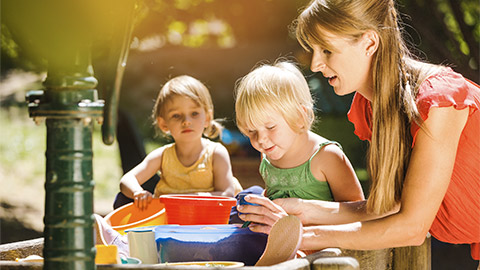
Developing a Quality Improvement Plan (QIP) at Sunshine Early Learning Centre
Sunshine Early Learning Centre has recently undergone a self-assessment as part of its commitment to the National Quality Framework (NQF). The service is focused on ensuring continuous improvement across the seven Quality Areas of the National Quality Standard (NQS). After consulting with staff and families and reviewing feedback from an external assessment, the centre identified several areas for improvement, specifically around Quality Area 2: Children's Health and Safety and Quality Area 3: Physical Environment.
Step 1: Self-Assessment and Identified Areas for Improvement
During the self-assessment, the following areas for improvement were identified:
- Children’s Health and Safety: Supervision during outdoor play was noted as a concern due to occasional staff shortages, leading to a lack of adequate coverage in all areas of the playground.
- Physical Environment: The outdoor play space has limited shaded areas, raising concerns about children’s exposure to the sun during warmer months.
Step 2: Stakeholder Engagement: To address these issues, the director consulted with educators, families, and children:
- Educators expressed concern about maintaining safety and supervision in large play areas during peak times, particularly when staff members are attending to individual needs.
- Families mentioned they were worried about their children's exposure to the sun, especially during the summer, and recommended the addition of more shaded areas or hats with sun protection.
- Children expressed that they enjoyed outdoor play but mentioned it was sometimes too hot to play comfortably.
Step 3: Prioritise Areas for Improvement: Based on the feedback and self-assessment, the centre prioritised two key improvement goals:
- Improve supervision practices in outdoor play areas.
- Enhance shaded areas in the outdoor environment to provide better sun protection.
Step 4: Set Goals and Objectives
1. Goal 1: Improve Supervision in Outdoor Play Areas - Objective: Ensure that children are adequately supervised during outdoor play, reducing risks of injury or incidents.
2. Goal 2: Increase Shaded Areas in the Outdoor Play Space- Objective: Provide more shaded areas to ensure children are protected from the sun and can play safely outdoors year-round.
Step 5: Develop Action Plans
| Goal | Action Steps | Responsibility | Timeline | Resources needed | Progress monitoring |
|---|---|---|---|---|---|
| Improve Supervision |
|
Director & Lead Educators | 2 Weeks | Updated Rosters Additional staff when needed |
|
| Increase Shaded Areas |
|
Centre Management and Maintenance | 1 Month |
|
|
Step 6: Implement and Monitor Progress
- Supervision Improvements: New rosters were created, and additional staff were assigned during peak outdoor play times. Weekly meetings were held to review any incidents or gaps in supervision, and adjustments were made as needed.
- Shaded Areas: The new shade structures were installed within the set timeline. Families were pleased with the addition of wide-brimmed hats for children and the enhanced sun protection provided.
Step 7: Review and Update the QIP: After six months, the centre reviewed the effectiveness of the changes:
- Supervision: There was a noticeable reduction in incidents, and staff felt more confident in their ability to supervise children during outdoor play.
- Shaded Areas: Feedback from parents indicated increased satisfaction with the outdoor environment, and children reported being more comfortable during hot weather.
The QIP was updated to reflect the progress, with new areas for improvement identified for the next cycle, such as introducing more natural play materials and continuing to enhance staff professional development.
By following a structured approach to developing the Quality Improvement Plan (QIP), Sunshine Early Learning Centre was able to successfully address its key concerns regarding children’s health, safety, and the physical environment. The continuous monitoring and engagement of stakeholders ensured that improvements were effective, contributing to the centre’s overall goal of providing high-quality education and care.
Practice
Developing a QIP
Reflecting on your self-assessment and the images from Learning from the previous practice activity "Assessing a service", use the QIP template at the link provided to document key strengths and improvement areas of the service regarding Quality Area 3 – Physical Environment (refer to pages 39–44) from the ACECQA self-assessment tool: Quality Improvement Plan from the ACECQA.

ACECQA administers the quality rating reliability assurance program. Some authorised officers are the assessors or field officers appointed by the regulatory authority. They are responsible for conducting the assessment and rating visits. They receive training from AECECQA about their specific functions under the National Law and Regulations to assess, rate, monitor compliance and investigate incidents in early education and care services.
ACECQA developed a tool named the National Quality Standard Assessment and Rating Instrument. Initially designed for authorised officers, this tool is now accessible to services to help them prepare for the visit.
Authorised officers use the tool to:
- Prepare for the assessment and rating visit
- Record observations and evidence during the visit to support the assessment
- Determine ratings and prepare the service report after the visit
The ACECQA encourages services to build a collaborative partnership with the authorised officers to create open communication, seek clarity, ask questions whenever required (and practical), and provide additional information to highlight the service’s strengths.
Resource
To find out more about preparing for assessment visits, review this fact sheet from the NSW Department of Education: Assessment and Rating for Family Day Care Educators.
Watch
Watch this video to learn about the ‘Excellent’ rating on the assessment: What Does the Excellent Rating Mean for Services? by ACECQA on YouTube: 2:00 minutes.
Practice
Preparing for an assessment visit
Review the assessment tool National Quality Standard Assessment and Rating Instrument from the ACECQA.
Find out and write down:
- The documentation the authorised officer will require
- Information about the service they will require
- How they will use your QIP
Ensure that you keep notes for future reference, as this information will support your assessment and professional practice.
Preparing for an assessment visit from the Regulatory Authority is an important process for Early Childhood Education and Care (ECEC) services. This visit evaluates the service’s performance against the National Quality Standard (NQS) and assesses the quality of education and care provided. Effective preparation helps ensure the service is compliant, organised, and ready to showcase its strengths. Below are key steps to prepare for the assessment visit:
Steps to Prepare for an Assessment Visit
Ensure a thorough understanding of the NQS, including all seven Quality Areas:
- Educational program and practice
- Children’s health and safety
- Physical environment
- Staffing arrangements
- Relationships with children
- Collaborative partnerships with families and communities
- Governance and leadership
Reflect on how the service's policies, procedures, and practices align with these standards.
- Ensure that the Quality Improvement Plan (QIP) is current, reflects ongoing improvements, and addresses all key areas of quality.
- Clearly document areas where the service has made improvements and outline future goals.
- Make sure the QIP is available to the assessor and reflects accurate self-assessment and planning for the future.
Ensure that all important documentation is up to date and accessible. Key documents include:
- Staff qualifications and professional development records
- Policies and procedures (e.g., health and safety, child protection, supervision)
- Risk assessments for excursions and daily routines
- Attendance records, incident reports, and medical records
- Child portfolios and planning documentation
Organise documentation in a way that allows easy access during the assessment visit.
- Communicate with educators and staff about the upcoming visit to ensure everyone is aware and prepared.
- Encourage staff to reflect on their practice and be familiar with how their work aligns with the NQS.
- Ensure that all staff are familiar with the service’s policies, procedures, and the QIP. They should be prepared to answer questions and provide examples of how they contribute to quality outcomes.
- Conduct mock assessment discussions to help staff feel more confident in articulating their practices.
- Review and maintain a safe and engaging environment for children, ensuring that all areas (indoor and outdoor) are clean, well-organised, and meet safety standards.
- Check that learning materials and equipment are developmentally appropriate, accessible, and reflect the service's educational philosophy.
- Ensure emergency exits are clearly marked, first aid kits are fully stocked, and safety procedures (like fire drills) are documented.
- Ensure that evidence of partnerships with families and the community is documented and visible. This could include newsletters, family involvement in service events, or collaboration with local organisations.
- Prepare feedback or testimonials from families about their experiences with the service.
- Ensure that the service is fully compliant with legislative requirements such as educator-to-child ratios, child protection regulations, and health and safety standards.
- Have up-to-date records showing compliance with Working with Children Checks (WWCC) or similar background checks for staff.
- Demonstrate clear policies for dealing with complaints, grievances, incidents, and emergencies.
The assessor will observe the service’s daily routines, interactions between staff and children, and the overall quality of care.
Be prepared to discuss:
- How do you implement the educational program and plan for individual children’s needs
- Your approach to supporting children’s health, safety, and wellbeing
- How staff collaborate and maintain strong relationships with families and children
- The service’s governance, leadership, and commitment to continuous improvement
Ensure the assessment day runs smoothly by sticking to regular routines and practices, allowing assessors to see an accurate reflection of daily operations.
- Continuously reflect on your service’s practices and identify areas where further improvements can be made, both before and after the assessment.
- Encourage a culture of reflection among staff, where they regularly consider the impact of their work and seek to improve the quality of care and education.
Preparing for an assessment visit requires thorough planning, collaboration, and reflection across all areas of service delivery. By reviewing the NQS, ensuring documentation is current, engaging staff and families, and maintaining a compliant and well-organised environment, services can be confident and ready to demonstrate their commitment to providing high-quality education and care.
Preparing your team for the Assessment and Ratings visit
To prepare your team for the Assessment and Ratings visit, it’s crucial to identify both the strengths of your service and the areas for improvement. This will help ensure that your team is confident, focused, and ready to present the best possible version of your service. Below are key things to consider when identifying strengths and areas for improvement:
1. Review of the Seven Quality Areas
Each of the National Quality Standard (NQS) Quality Areas should be examined thoroughly. These areas include the core standards against which your service will be assessed. By reflecting on each area, you can identify what the service does well and where there are opportunities for growth.
| Quality Area | Strengths | Areas of Improvement |
|---|---|---|
| Quality Area 1: Educational Program and Practice | Are educators effectively planning and implementing learning programs that meet children’s needs and interests? | Are there areas where documentation or the implementation of the program could be more reflective of individual children’s progress and development? |
| Quality Area 2: Children's Health and Safety | Are health and safety procedures well-documented and consistently applied? |
Is there any gap in health records, risk assessments, or emergency procedures that need to be addressed? |
| Quality Area 3: Physical Environment | Is the indoor and outdoor environment stimulating and safe, with well-maintained equipment and resources? |
Could the environment be enhanced to better support inclusive practices or sustainable practices? |
| Quality Area 4: Staffing Arrangements | Are the educators well-qualified, and are the staff-to-child ratios consistently met? | Are there opportunities for additional professional development or more consistent staffing arrangements during busy periods? |
| Quality Area 5: Relationships with Children | Do educators build warm, responsive, and trusting relationships with children? | Could there be more structured opportunities for one-on-one engagement to enhance relationship-building? |
| Quality Area 6: Collaborative Partnerships with Families and Communities | Is the service effectively communicating with and involving families in the children’s learning and care? | Are there opportunities to strengthen partnerships with external community services or better incorporate family feedback into the program? |
| Quality Area 7: Governance and Leadership | Does the leadership team effectively manage operations and support continuous improvement? | Could governance or management areas be improved, such as clearer roles, professional development, or more systematic self-assessment? |
2. Use the Quality Improvement Plan (QIP)
The QIP is a key tool in identifying strengths and areas for improvement.
Strengths: Review how the QIP reflects areas where the service has made clear improvements or demonstrated high quality in educational programs, safety, relationships, etc.
Improvement: Consider whether there are areas not sufficiently addressed in the QIP or if there are any gaps where additional actions or goals should be set.
3. Reflect on Previous Feedback or Ratings
Strengths: Reflect on any previous assessments, feedback from parents, or internal reviews to identify previously praised areas.
Improvement: Identify areas where feedback indicated a need for improvement or past assessments highlighted weaknesses. Focus on whether these areas have been addressed and how.
4. Assess Documentation and Record Keeping
Strengths: Are records such as attendance logs, incident reports, and child portfolios well-maintained, accessible, and up-to-date?
Improvement: Check for any inconsistencies or missing documents. Are all required policies and procedures clearly documented, communicated, and applied?
5. Check Compliance with Regulatory Requirements

Strengths: Is the service compliant with all regulations, such as educator-to-child ratios, staff qualifications, and working with children checks?
Improvement: Are there areas of compliance that could be improved or where the service might need additional support, such as ensuring all staff qualifications are up to date?
By reflecting on these areas, the service can highlight its strengths and work collaboratively to improve weaker areas ahead of the assessment visit. Team preparation through self-assessment and focused improvement efforts will help ensure a successful Assessment and Ratings process.
Training staff
Training staff effectively in an early childhood education setting, particularly in preparation for an Assessment and Rating visit, can be achieved through various methods. Here are some key ways you can train staff to ensure they are knowledgeable, confident, and prepared:
- Workshops and in-service training
- Role-play and simulations
- Mentoring and coaching
- On-the-job training
- Team meetings and reflective practice
- Online learning
- Peer learning and collaborations
- Performance reviews and goal sharing
What to expect on the Assessment and Ratings visit

During the Assessment and Ratings visit, the Regulatory Authority evaluates the service’s performance against the National Quality Standard (NQS). This visit provides an opportunity for the assessor to observe day-to-day practices, review documentation, and discuss policies with staff. Understanding what to expect can help the team prepare and feel more confident during the process.
1. Pre-Visit Notification and Planning
- The service will typically receive advance notice of the assessment visit, allowing time for preparation.
- A date and time for the visit will be scheduled, and the service will be informed of the lead assessor responsible for conducting the assessment.
- The service must ensure that all key documents, such as the Quality Improvement Plan (QIP), policies, and records, are up-to-date and accessible for review during the visit.
2. Introduction by the Assessor
On the day of the visit, the assessor will introduce themselves and outline the assessment process.
The visit typically takes place over one or two days, depending on the size of the service and its complexity.
The assessor will explain the areas they will focus on, including observing daily practices and interactions and reviewing documents related to the seven NQS Quality Areas.
3. Observation of Daily Practices
Observations are a key part of the assessment process. The assessor will observe how the service operates during a typical day, including:
- Educators’ interactions with children include communication, care, and engagement in activities.
- Transitions between activities, such as meal times, rest periods, and outdoor play.
- Supervision practices and safety measures.
- The physical environment and how it supports learning, development, and well-being.
The assessor will look for examples of how the service promotes quality practices that align with the NQS.
4. Documentation Review
The assessor will review various documents to ensure compliance and quality. Key documentation includes:
- QIP: The service’s plan for continuous improvement, showing how areas for development have been identified and addressed.
- Policies and Procedures: Including health and safety policies, child protection protocols, supervision plans, and emergency procedures.
- Educational Programming: Plans that reflect how the service tailors learning experiences to meet children’s individual needs.
- Records and Evidence: Attendance logs, incident reports, staff qualifications, and child portfolios showing progress and learning outcomes.
5. Discussions with Educators and Staff
The assessor will have discussions with educators, room leaders, and the management team to gain insight into the service’s practices. Expect questions such as:
- How do you implement your educational program and planning for individual children?
- How do you ensure children’s health and safety during the day?
- How do you collaborate with families and the community to support children’s development?
- What professional development opportunities are offered to staff?
Staff should feel comfortable explaining their day-to-day work, reflecting on how they align with the NQS, and discussing their role in the service’s continuous improvement.
6. Assessment of the Seven Quality Areas
The assessor will evaluate the service across the seven NQS Quality Areas, looking for evidence of quality practices in:
- Educational Program and Practice: Are children’s learning and development being effectively supported?
- Children’s Health and Safety: Are health, safety, and wellbeing priorities?
- Physical Environment: Is the environment safe, engaging, and well-maintained?
- Staffing Arrangements: Are there enough qualified educators to support children’s needs?
- Relationships with Children: Are positive, respectful relationships with children being promoted?
- Collaborative Partnerships with Families and Communities: How is the service fostering strong relationships with families?
- Governance and Leadership: Are there effective leadership and management practices in place?
7. Non-Verbal Observations
The assessor will also take note of non-verbal cues during their visit, such as:
- The atmosphere of the service, including how calm, organised, and respectful it feels.
- Children’s engagement in activities and how they interact with each other and staff.
- The physical setup of rooms, equipment, and materials.
- Safety measures like child-proof gates, hazard-free areas, and emergency procedures are on display.
8. Interacting with the Assessor
While the assessor may ask questions, educators should continue with their routine tasks and interactions with children. Educators are encouraged to be natural and transparent. They don’t need to alter their practices but should be prepared to explain their approach when asked.
Demonstrating professionalism and confidence is key. Educators can highlight examples of best practices during conversations with the assessor.
9. Feedback and Closing Discussion
At the end of the visit, the assessor may provide brief feedback or request follow-up information.
There will often be a final discussion to clarify any observations and summarise the visit.
This is a chance for the service to ask questions, provide additional insights, or clarify any practices that may not have been fully observed during the visit.
10. Post-Visit: Ratings Outcome
After the visit, the service will receive a Ratings Report from the Regulatory Authority. This report outlines the service’s performance across the seven Quality Areas and assigns a rating such as:
- Exceeding NQS
- Meeting NQS
- Working Towards NQS
- Significant Improvement Required
The service will have the opportunity to provide feedback on the draft report before the final rating is confirmed. The rating is then published on the national registers to provide transparency for families and the public.
Tip
Key Points for Educators and Staff to Remember:
- Be confident in discussing your daily practices and how they align with the NQS.
- Use the QIP as a reference to showcase your service’s commitment to improvement.
- Stay calm and continue regular routines so that assessors see a true representation of the service.
- Engage positively with the assessor, and provide clear examples of how you contribute to children’s learning, safety, and well-being.
By following these steps and being well-prepared, the team can ensure a smooth and successful assessment visit that reflects the quality of care and education provided by the service.
Resource
Check the guide for how to prepare documents in an organised way for an assessment Child Care Centre Desktop: Document Organisation Checklist.
